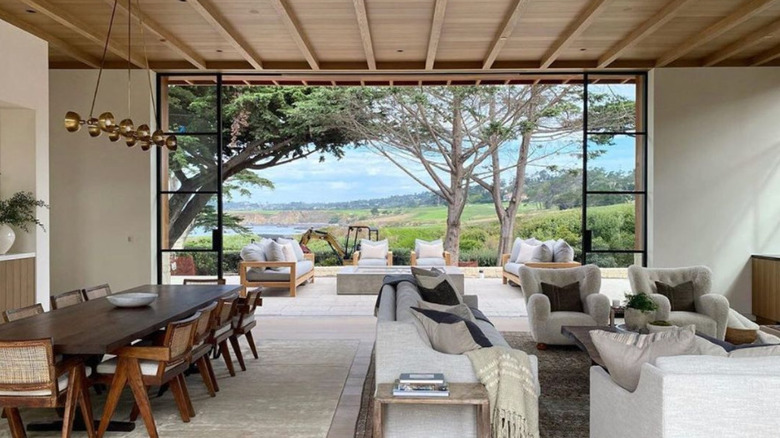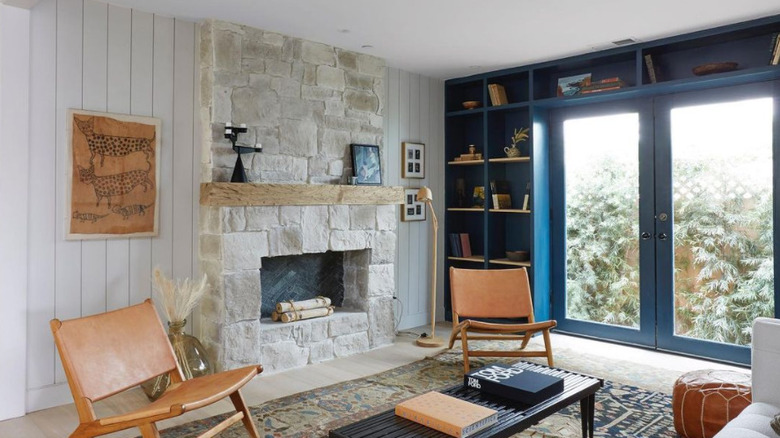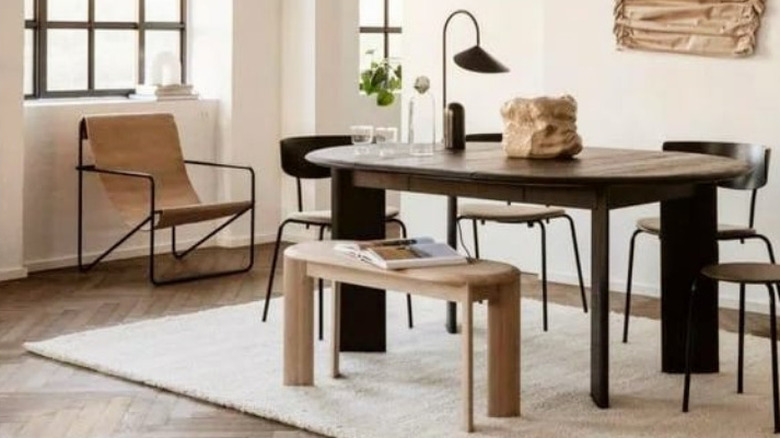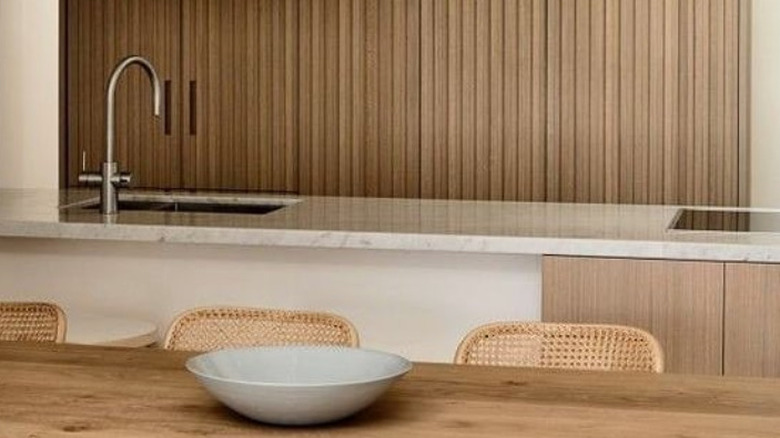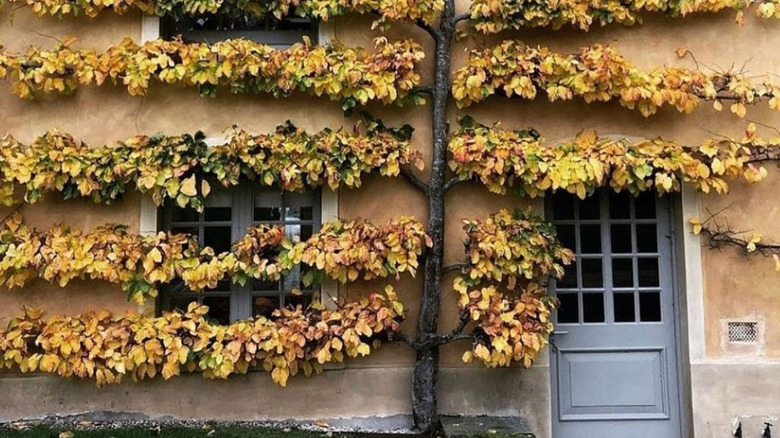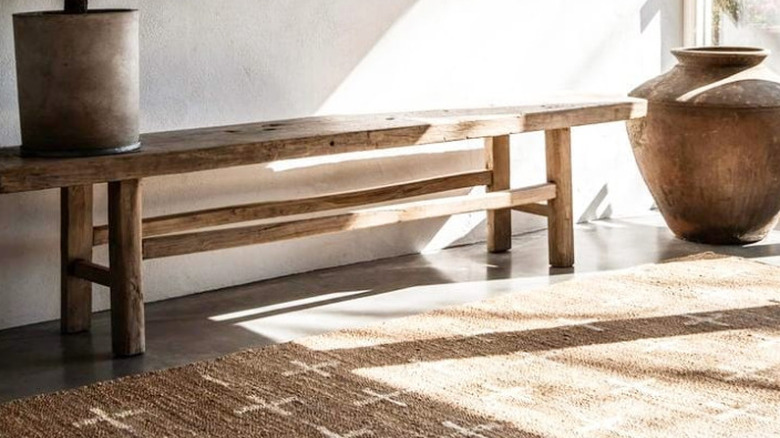The Truth About Japandi Design
If trinkets and thick shades have never been ideal pieces for your interior taste, then you'll be thrilled by the newest design trend sweeping homes and phone screens alike.
Enter Japandi. Japandi may be all about comfort and openness, and – even though there are similar design aesthetics that aim for the same airy vibes, – none have taken off quite like the Japanese and Scandinavian fusion. As described by Ward 5 Design's Leni Calas for The Spruce, "Japandi design is the combination of Scandinavian functionality and Japanese rustic minimalism to create a feeling of art, nature, and simplicity."
In 2020 alone, the searches for Japandi went up an impressive 100% on Pinterest, (via Pure Wow). This and many other reasons inspired interior design lovers to investigate. Interior designer Shanty Wijaya, founder of Allprace Properties, a boutique home design, describes the emerging trend, via CNN, noting, "Japandi is the East meets West design movement that blends Japanese artistic elements and wabi-sabi philosophy with Scandinavian comfort and warmth."
Wijaya continued, "Both the Japanese and Scandinavian design aesthetics are focused on simplicity, natural elements, comfort and sustainability."
Scandinavian and Japanese designs have been inspiring each other for over 150 years
Shanty Wijaya explains further, (via Pure Wow), "Japandi teaches us to find beauty in imperfection, form deep connections to Earth/nature, and enjoy the simple pleasures of life."
Just how do these two styles work so harmoniously with each other? As it turns out, Scandinavian and Japanese designs have been inspiring each other for over 150 years. Danish architects, artists, and designers travelled to Japan when the country first opened its closed border policy hundreds of years ago for inspiration. Many believe there are still traces of Japanese influence in modern Danish design as well. In addition, both interior styles rely heavily on wood, and both countries have a high respect for artisans and craftsmanship, (per BoConcept).
The first two things to consider when converting your home's interior with Japandi design in mind, or if you are starting from scratch, is to keep it clean and think about where you can accent wood. "To create depth and interest when incorporating Japandi design, use different stained, colored woods," says Wijaya.
Japandi doesn't have to break your budget
The natural warmth of wood is heavily emphasized in Japandi, so it may be fitting to add wood paneled walls or countertops. However, there is no need to convert everything to wood. Japandi reflects balance, so if you start to feel overwhelmed, start by making small changes in detailing, (via BoConcept).
This design aesthetic can also be done on a budget as it encourages the "less is more" interior scheme and is heavily influenced by repurposing and sustainability. "Follow the principle of wabi-sabi and embrace imperfection by repurposing your furniture," recommends Wijaya, (via Pure Wow). She goes on to encourage making homemade art or finding a vintage piece to decorate your home.
And when it comes to statement furniture, remember that you don't have to choose an obnoxiously bright color or oversized piece for it to be memorable. "Create a Zen-like oasis in your home by choosing simple and low-profile furniture pieces," shares Wijaya (per Pure Wow). Think more practical than embellished when it comes to furniture.
Keep it neutral to stay calm
We have learned that an uncluttered space with wooden accents is very much, Japandi. Another important element to the merging influences of Japanese and Scandinavian design is color. In the world of Japandi, neon is banished. Ostentatious is a curse word. And anything loud has no business being a part of the merger. Japandi encourages colors that could best be described as soft, calm, and muted, (via BoConcept).
Rhiannon Lee of Oleander and Finch Interiors explains how a neutral color palette can affect your mood. "Bringing in some traditionally Scandinavian neutrals and fusing them with darker Japanese style timbers and raw materials is a natural partnership that promotes feelings of tranquility and cohesion," she says, (via The Spruce).
In addition to muted colors, the infusion of nature into your home may be an important element of Japandi style that you can almost instantly incorporate.
Outdoor and indoor blend seamlessly together with Japandi
To some, introducing nature into your home can be as easy as adding a few potted plants. You can also touch on both the nature and practicality elements of Japandi in one go by having fresh green herbs on your kitchen counter to cook with. If you want to keep your counter space as clutter free as possible, consider hanging plants or having the pots directly on the floor, (via Pure Wow).
"Try to merge the lines between indoor and outdoor where possible," says Rhiannon Lee. If you look at both Scandinavian and Japanese design, you will notice the outside of the home is just as paid attention to. "Both cultures have a deep respect for their landscape and its aesthetic qualities," she says, (via The Spruce).
If you really have room in the budget to incorporate nature into your home, then you can install a sliding glass door, or create an outdoor dining space to make the line between indoors and outdoors a little more Japandi-approved blurry, (via Pure Wow).
Natural light is always a welcomed guest
The last and arguably most important element in the mash-up of Japanese and Scandinavian design is natural light. Take down those heavy curtains and consider leaving your windows bare of any treatments, if possible. Japandi design welcomes the sun and the feeling of openness along with the natural light it brings. If you do need privacy or a way to protect your eyes from the glare, consider choosing Roman shades or roller blinds in neutral tones, (via Pure Wow).
Not only did searches for Japandi increase by 100% on Pinterest in 2020, but the site also referenced to the design merger as "the new modern" in its 2021 predictions report. So why now? After all of the French country cottage and industrial-chic interiors we've come across, we're thinking a Japandi-inspired space is the perfect cocoon to come home to after a long day of work; to just relax into your own personal sanctuary. And of course, the experts concur. "In our hectic lives, we have learned to take a backseat to calm and serenity," explains Rhiannon Lee. She later adds, (via The Spruce), "People are seeking out simplicity and desperate to create sanctuary-like environments to retreat to."
